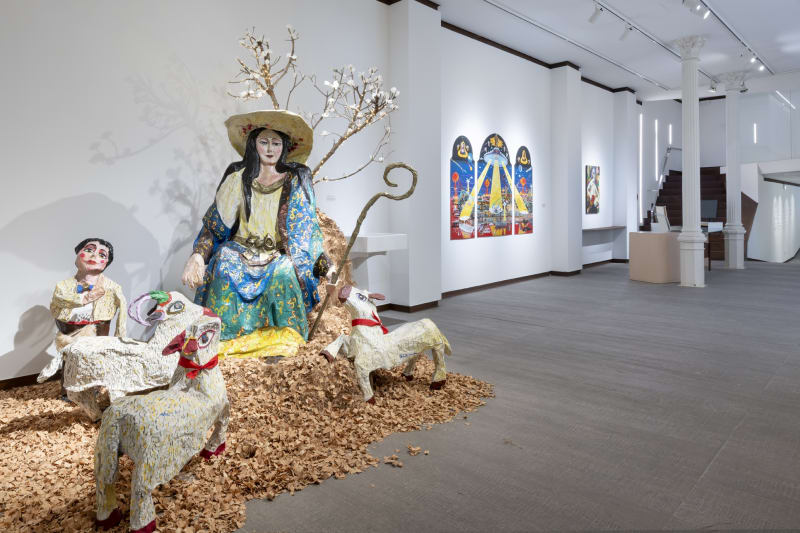Mayoral brings together works by 13 representative artists of the period between 1978 and 1992 in the city of Barcelona to illustrate the duality between the resurgence of painting and sculpture and, on the other hand, the most transgressive art, linked to performance and underground culture.
After the long Franco dictatorship, Barcelona in the 1980s experienced a decade of euphoria during the transition to democracy. The city winning the bid to host the 1992 Olympic Games led to significant expansion and internationalization. The hegemonic narrative was, however, full of nuances and complementary visions. The discovery of AIDS, the havoc wrought by heroin, terrorist attacks and emigration left a deep mark on these years, which entailed a return to order, repression and at the same time vindication and social struggle (see short timeline overleaf).
In this context, the exhibition we present illustrates one of the aspects of postmodernity focusing on the city of Barcelona and the period from 1978 to 1992. As Vicenç Altaió mentions in the exhibition’s curatorial statement: “in the 1980s a new cycle was born, given the generic name of postmodernity, in which the works with a canonical future, applauded by the most official criticism and displayed by newly established institutions and museums, and the works arising from alternative circuits, outside the market, nurtured each other in confrontation and exhibition”. Thus, artists such as Ferran García Sevilla, Miquel Barceló, Jaume Plensa, Francesca Llopis, Perejaume, Tom Carr, Josep Uclés and Ramiro Fernàndez were present in the main institutional exhibitions of the time, such as “Bèstia!” (Palau Marc, 1984) and “Extra!” (Palau Robert, 1987), and in international shows and exhibitions such as “Seny i rauxa” (Centre d’Art Pompidou, 1978) and Documenta 7 (Kassel, 1982), among others. At the same time, artists such as José Pérez Ocaña—to whom we recently devoted a solo exhibition—, Marcel·lí Antúnez, Joan Gelabert, Ramon Puiggené and Martina Pla offer us alternative narratives from the counterculture. Alongside others, they provided visibility to the world of performance, photography, comics, etc.
This represented a plurality of simultaneous tendencies in a Barcelona with a rich cultural and artistic life. Culture was used as an element of promotion, as a festive act of celebration, promoting art and contemporary creation
[1]. The exhibition is completed with a careful selection of documentation including catalogues from exhibitions organized both in galleries and in institutional centres of the city, together with copies of magazines.
[1] Grandas, Teresa. "Gelatina dura. Historias escamoteadas de los 80". Barcelona: MACBA (11/ 2016 – 3/2017), p. 31 [exh. cat.]












